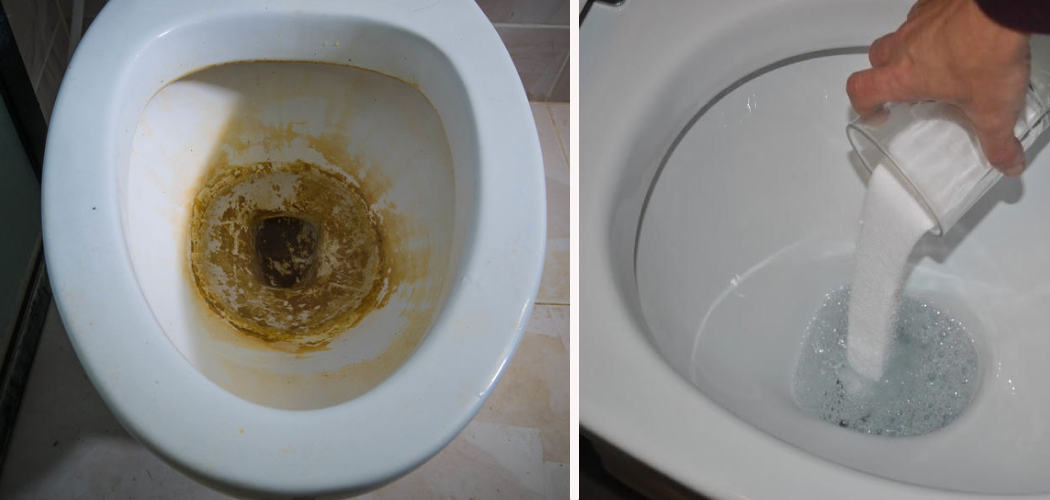Are you dealing with calcium buildup in your toilet bowl? Calcium deposits can make your toilet look dirty and unappealing. Fortunately, removing calcium build-up is a relatively easy process with the right tools and supplies.
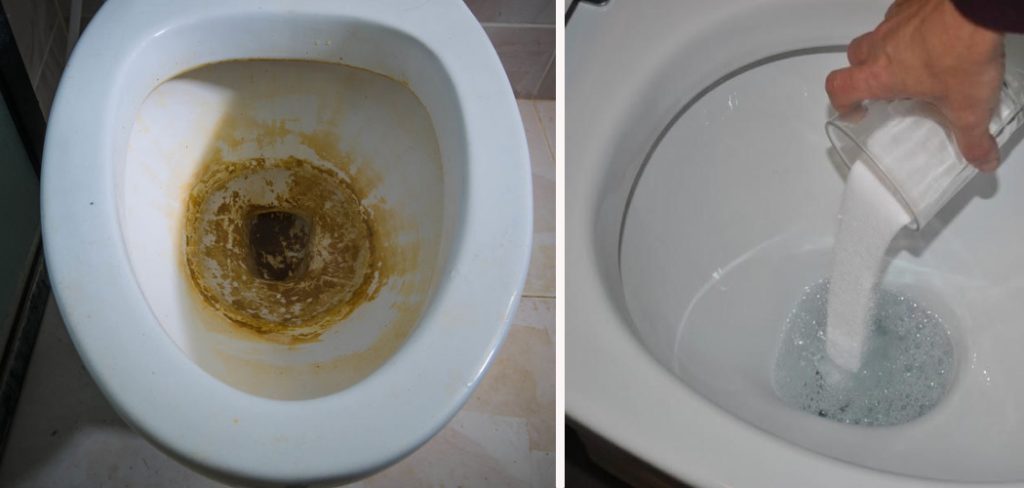
Nobody wants to come across calcium buildup in their toilet bowl, but it’s an unfortunately common occurrence. Many factors like hard water, alkaline cleaners, and more can cause it. However, it may seem like a daunting task to take on removing the calcium buildup from your toilet bowl, but fear not!
This blog post will provide you with step-by-step instructions on how to remove calcium build up in toilet bowl that is easy to understand and follow so you can tackle this problem head-on and restore the cleanliness of your bathroom again. So without further ado, let’s jump right into what these steps entail!
What Causes Calcium Build-Up in Toilet Bowl?
A variety of elements causes calcium buildup in the toilet bowl. Hard water, alkaline cleaners, and minerals found in tap water all contribute to the problem when these substances mix together with oxygen and other chemicals, and calcium deposits form on the surface of your toilet bowl.
These deposits can range from small stains to thick layers that need to be scrubbed away for a thorough cleaning. Fortunately, there are some easy steps you can take to tackle this issue without having to resort to professional help or purchasing expensive equipment or materials.
What Will You Need?
Before you start, you will need the following supplies:
- White vinegar
- Baking soda
- A scrub brush or toilet brush
- A rag or cloth
Once you’ve gathered all the necessary supplies, it’s time to jump into how to remove calcium buildup in the toilet bowl.
10 Easy Steps on How to Remove Calcium Build Up in Toilet Bowl
Step 1: Use Vinegar On Its Own
The first step is to use vinegar on its own. Pour a generous amount of white vinegar into the toilet bowl. You can also take this opportunity to thoroughly clean the entire surface area of your toilet if you would like. Allow the vinegar to sit in the toilet bowl for an hour or so before proceeding further.
Step 2: Add Baking Soda and Scrub
After at least an hour, add baking soda to the mix and begin scrubbing with a rag or brush. Ensure you cover every inch of calcium buildup as best as possible. The combination of baking soda and vinegar should work together to break down any tough buildup that may have accumulated in your toilet bowl over time.
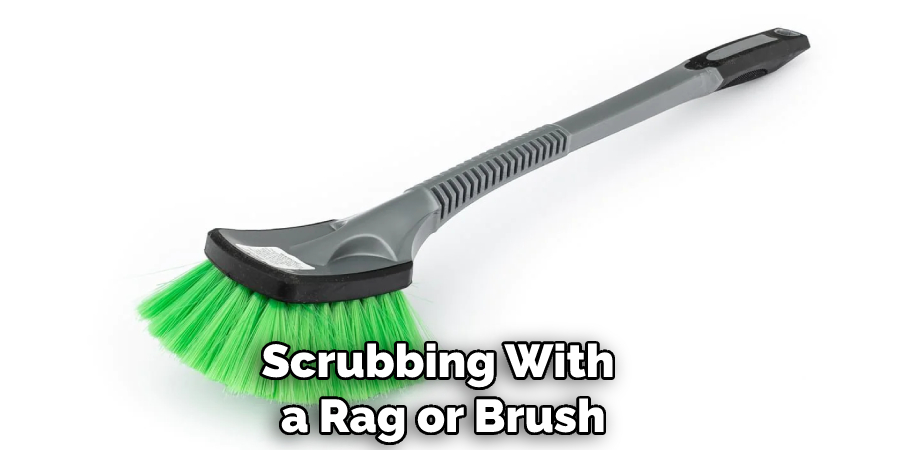
Step 3: Flush and Wipe Away
After you’ve thoroughly scrubbed the area, flush the toilet to remove any excess residue. Use a rag or cloth to wipe away any remaining calcium build up that may not have come off with the scrubbing. If necessary, repeat steps 1-3 as many times as needed until all of the calcium build up has been removed from your toilet bowl. This might require multiple attempts, so be patient and thorough in your approach!
Step 4: Clean and Maintain
Once you’ve successfully removed the calcium build up, it’s important to clean the entire area and maintain it on a regular basis. Start by wiping down all surfaces of your toilet with a cloth dampened in warm soapy water. This will help remove any lingering bacteria or dirt that may be leftover from this process. Additionally, it’s important to use cleaners specifically designed for toilets every few weeks in order to prevent calcium build up from occurring again.
Step 5: Use a Toilet Brush
Using a toilet brush to clean your toilet is also an effective way to remove any remaining calcium build up that may have been overlooked. It’s important to make sure that you are thoroughly scrubbing all areas of the bowl, including the sides and bottom.
Step 6: Use a Pumice Stone
If you’re still having trouble removing the calcium build up, try using a pumice stone. This tool is designed to help remove tough stains and surface buildup. Make sure that you are wearing gloves while using the pumice stone in order to protect your hands.
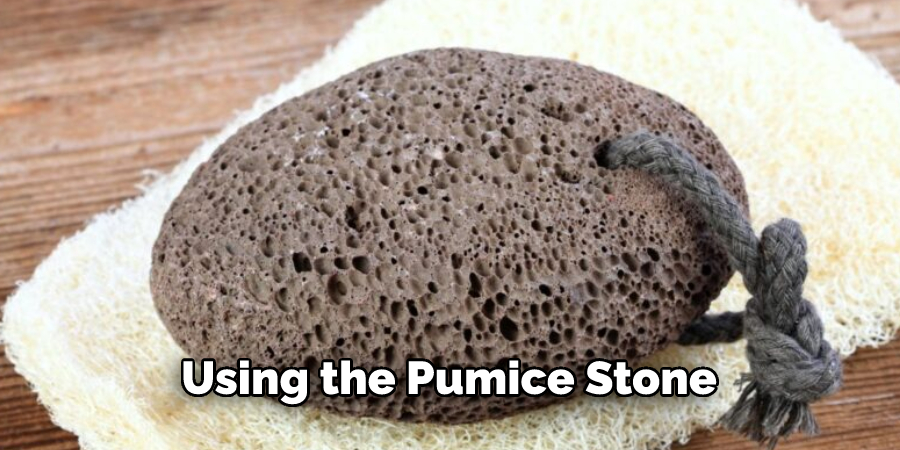
Step 7: Try a Calcium Remover
If all else fails, you can always try using a calcium remover product. This is a chemical that works to dissolve calcium buildup and make it easier to remove from surfaces. Make sure to follow the instructions on the packaging of the product carefully in order to ensure your safety as well as effective results.
Step 8: Try a Descaler
A descaler is another product that you can use to help remove calcium build up. This product works by breaking down the minerals in the water and making them easier to remove from surfaces. Again, make sure to follow all instructions on the packaging before using this product.
Step 9: Call a Plumber
If all of these steps still haven’t helped you remove the calcium build up, it may be time to call a plumber. A professional will be able to identify and address any underlying issues that could be causing the build up in your toilet bowl. Moreover, they will be able to recommend additional preventive measures that you can take in order to keep your toilet bowl clean and calcium-free in the future.
Step 10: Prevention is Key!
Practicing regular maintenance is the best way to prevent calcium build-up from occurring again. Make sure that you are cleaning your toilet regularly and using the appropriate cleaners for your specific type of toilet. Additionally, avoid using hard water when possible, as this can often be a cause of calcium build up in the first place!
By following these steps, you’ll be able to effectively remove any calcium build-up in your toilet bowl. As always, if you’re still having trouble removing the buildup, don’t hesitate to call a professional plumber who can provide additional assistance. Taking the time to properly remove and prevent calcium build up from occurring again is an important part of keeping your toilet clean and functioning efficiently!
5 Additional Tips and Tricks
1. Clean the bowl regularly using a toilet brush and cleaner containing hydrochloric or sulfuric acid. This will help to prevent calcium buildup as much as possible.
2. To get rid of stubborn calcium deposits on the rim, fill a spray bottle with a mixture of 50% white vinegar and 50% water and spray around the rim. Let it sit for 15-30 minutes, then wipe it away with a cloth or sponge.
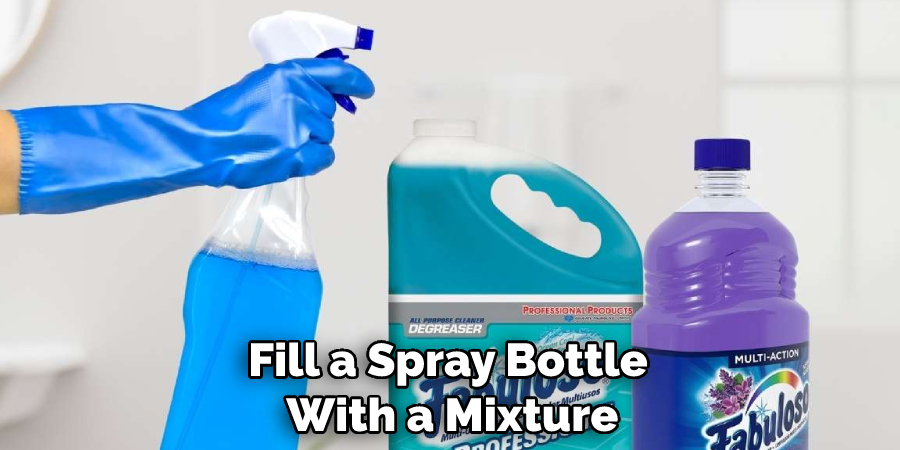
3. If you need more power, dissolve two tablespoons of baking soda in 1/4 cup of vinegar and pour the mixture around the rim. Wait for about 15 minutes, then scrub with a toilet brush.
4. For really tough calcium buildup, use a pumice stone or steel wool to scrape away at the deposits. Be sure to wear gloves when doing this!
5. Finally, add a few drops of dish soap to your toilet bowl every couple of weeks to prevent future buildup. The soap will help break down minerals and keep them from sticking to the bowl’s surface.
This simple step can go a long way in keeping your toilet clean and free of calcium build up!
5 Things You Should Avoid
1. Avoid using harsh chemicals. While these may seem like a quick fix, they can sometimes cause more harm than good in the long run.
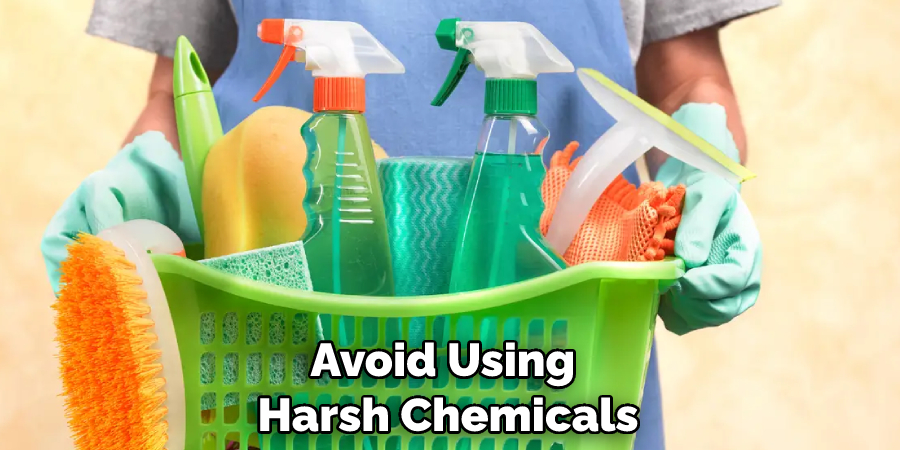
2. Don’t use metal brushes or scrubbers to clean off calcium deposits. These tools can scratch and damage the finish of your toilet bowl.
3. Don’t try to chip away at calcium build up with a knife or other sharp object. This could result in cracks or chips that are difficult to repair, leaving your toilet bowl looking worse for wear.
4. Stay away from abrasive cleaning products such as steel wool or scouring pads, as these can also damage the surface of your toilet bowl over time.
5. Avoid any commercial products marketed specifically for removing calcium buildup, as some may contain harsh chemicals that could damage your toilet bowl.
If you follow these tips, you should be able to keep calcium buildup from becoming a problem in your toilet bowls. With a little elbow grease and the right materials, calcium buildup should be easy to tackle.
Conclusion
Removing calcium buildup from your toilet bowl may not seem like a difficult task, but it can be tricky and requires careful attention. The most effective way to get rid of the troublesome build-ups is through scrubbing and cleaning the surfaces with special solutions or simple acids. Even so, you should remain cautious as there is always a chance of damaging the porcelain if it is not done correctly. Using a professional cleaner might help avoid any possible consequences and ensure that your toilet bowl will look as good as new in no time.
Ultimately, this method and care may take some time and effort, but the results are worthwhile and you will have an efficiently clean, sparkly plumbing fixture all year round.
Hopefully, the article on how to remove calcium build up in toilet bowl has helped you gain a better understanding of how to tackle this difficult job. Now, with the right technique, and supplies, you’ll be able to keep your bathroom sparkling clean! Good luck!

